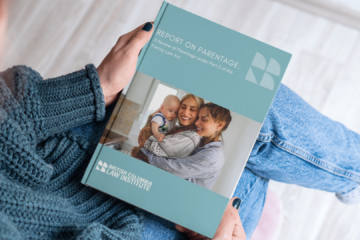Stories in Economic Abuse: Tools of Harm
June 7, 2024
BY Alison Wilkinson

Our project on economic abuse and family litigation is well underway. Currently, our research is delving into case law to uncover how family business can be used as tools of economic abuse. The analysis reveals fascinating and important patterns in the behavior of perpetrators and the legal responses to them.
An example, Droit de la famille 22274, 2022 QCCS 638
Economic abuse often is just one form of violent behavior present in a relationship. Perpetrators use whatever means available to exert control and cause harm. In this case, the perpetrator wielded control over their immigration sponsorship and financial disclosures to pressure the victim/survivor.
By threatening to revoke their sponsorship, the perpetrator manipulated the victim into reacting. The perpetrator called the police and made a claim that the victim threatened to kill him, herself and their children.1 This led to the child being removed, causing significant distress for the victim/survivor.
Cases may define violence as ‘mutual’ or on the part of the victim/survivor when incidents like this occur. However, research shows us that perpetrators know how to ‘trigger’ reactions from the victim/survivor to ‘create’ false evidence of the victim’s instability and violence. This tactic is used against the victim2 and was evident in the current case.
The perpetrator used non-payment and non-disclosure as primary tools of economic abuse.3 They claimed that they had no ownership in their family’s business, despite direct evidence to the contrary.4 Furthermore, they claimed that they weren’t able to work full-time due to medical reasons.5 These behaviors are incredibly common in the case law, making non-disclosure and non-payment the ‘bread and butter’ of economic abuse.
This case stood out because the perpetrator used immigration status to instigate criminal charges against the victim. Fortunately, the Court recognized the true nature of this situation and the perpetrator’s role and intentions.6
Lesson from the Case
This case illustrated three common features in the case law on economic abuse involving a family business:
- Perpetrators will use whatever points of power they have to cause harm. In this case, those points were on immigration and financials.
- Economic abuse is usually one piece in a wider pattern of violence.
- Violent behavior is complicated, nuanced, and relational. In this case, the victim faced criminal charges and could easily been perceived as the violent party or viewed as part of a mutually violent situation. However, the Court correctly identified and attributed the responsibility to the perpetrator.
This analysis highlights how crucial it is to recognize the subtle methods of economic abuse and the importance of thorough legal examination to ensure victim/survivors receive justice.
[1] Droit de la famille 22274, 2022 QCCS 638 at para 15.
[2] Dr Linda C Neilson, Responding to Domestic Violence in Family Law, Civil Protection & Child Protection Cases (2017 CanLIIDocs 2) at 20.8.
[3] Supra, note 1 at para 76.
[4] Ibid, at para 72-73.
[5] Ibid, at para 80.
[6] Ibid, at para 39-40.












































